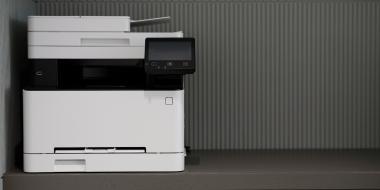Email cover letter: subject, writing and tips
If you’re applying for a job, you’ll probably need to submit your application using an online portal, or via email. For email job applications, it’s essential to write a polite and professional email accompanying your CV and cover letter, which you’ll include as attachments to the email. In this article, we discuss how to write an email cover letter that makes a positive impression with employers, including tips and examples you can use in your job applications.

Why sending a good email with your cover letter is important
It’s important to write a good email when sending your cover letter and CV for job applications. This is because, like everything else you’re sending, it’s part of your job application and a chance to showcase your qualities. Hiring managers and recruiters will form a first impression upon reading your cover letter email, and every impression you make will have an impact on your chances of success.
While it’s impossible to get a job on the quality of your email, it’s possible to create a negative impression that will significantly harm your chances. Thankfully, though, there are a few simple steps you can take to ensure your email cover letter introduces your application in a strong, confident and professional manner.
Expert Tip:
How to email your cover letter
The general rule of thumb when writing an email with your cover letter and CV as attachments, is to keep it simple. The email doesn’t need to be anything more than a brief introduction to yourself, explaining the role you’re applying for and directing the reader towards your clearly labelled attachments. It’s important to be courteous, concise and professional, but you don’t need to try too hard to impress. Your cover letter and CV should have all the necessary information to show you’re a worthy and capable candidate. For tips on what to include in your CV, see our CV examples.
Follow these steps to creating an email that will create a positive first impression with recruiters, HR managers and hiring managers:
Subject line of your email
Firstly, choose a subject line that clearly states the purpose of your email. You can keep this brief and to-the-point, so the reader knows exactly what the email is for, even before they open it. Add your name and the title of the job you’re applying for, along with any reference numbers or other relevant information. If you have the name of the hiring manager, but the email address is a generic company contact address, you could add their name to the subject line.
Here are some example email subject lines for emailing your cover letter and CV:
Rob Forsyth – Barista Job Application
Helen Sullivan – Account Director Application
FAO Andrew Barnett: Akash Patel Sales Executive Application
Michelle Keane – English Teacher Application (ref. 86037)
Addressing the hiring manager
If you know the name of the hiring manager, start your email by addressing them directly. Email is generally a less formal medium than traditional mail, so it’s not typically necessary to follow traditional letter-writing conventions. As such, on an email application you can usually address the hiring manager by their first name (for example, ‘Dear Sophie’). For more formal and traditional professions, you might prefer to use their full name, or their title and surname (for example, ‘Dear Sophie Reid’ or ‘Dear Ms. Reid’).
If you don’t know the name of the hiring manager, avoid old-fashioned greetings such as ‘To whom it may concern’ or ‘Dear sir/madam’. These are too formal for email correspondence and could show a lack of awareness of modern job application conventions. Instead, address your email to ‘Dear hiring manager’, or if you know the job title of the hiring manager, use this instead (for example, ‘Dear HR Director’).
Body of the email
The body of your email simply needs to confirm the role you’re applying for and direct the reader to the attachments. In your first sentence, mention the job title and reference where you saw the job advertised, as this information can be useful for hiring managers. Next, draw the attention of the reader to the attached cover letter and CV, as well as any other documents required as part of the application. Finish your email with a polite sentence expressing your enthusiasm, gratitude and leaving a call to action that encourages the reader to contact you for more information, or to arrange an interview.
Another approach is to include your entire cover letter in the email body text. This makes your cover letter more immediate. However, hiring managers are likely to save your CV and any other attachments before they review them. If your email is your cover letter, it’s less likely to be saved and read when employers review the applications. So, if you have information in your letter that you’d like to be considered by decision makers, it’s probably best to attach your cover letter separately. Take a look at our cover letter templates for help crafting a high-quality cover letter.
Save your letter in the best format
If you’ve written your cover letter and resume in MS Word, save them as a PDF before attaching them to your email. Make sure you save them as accessible PDFs for electronic use, rather than for printing, This preserves the quality of the document and retains its accessibility features.
If you’ve created your cover letter and resume in Google Docs or another cloud-based word processor, you could simply share the link in your email. However, make sure you’ve given all the necessary permissions and access to employers before sending the link. Make the recipient a viewer, rather than an editor, so they can see your documents but not edit them.
Include your CV and letter
This point may seem obvious, but remember to double-check you’ve attached your CV and cover letter before you send your job application email. It’s easy to rush to send your email before noticing that you haven’t attached the relevant documents. This can make you appear unprofessional.
Ending the email
As with your greeting, there are different conventions for email sign-offs compared to traditional mail. You generally don’t need to use sign-offs like ‘yours sincerely’, ‘yours truly’ or in the case of not knowing the name of the hiring manager, ‘yours faithfully’. Instead, choose a sign-off that’s polite and that you like personally. These can include ‘regards’, ‘best regards’ or even ‘best wishes’ or a simple ‘thank you’. For a slightly more formal sign-off, consider using ‘sincerely’.
End your email with your full name and your contact details. If you have an email signature with your contact information already included, add this. Otherwise, simply add your phone number and email address under your name.
"The general rule of thumb when writing an email with your cover letter and CV as attachments, is to keep it simple."
Examples of an email for your cover letter
Jobseeker’s cover letter articles can help you to develop a strong, compelling cover letter. Our CV templates can also guide your CV writing. However, for your email, here are two examples that can help with your job applications. The first example is clean, simple and to-the-point, while the second example adds a few optional flourishes if you wish to make your email slightly more friendly and personable:
Example 1:
Dear Martin Rawlinson,
I’m writing to apply for the position of Data Engineer, as advertised on LinkedIn on 13 July.
Please see attached my CV and cover letter for this application.
Thank you for considering my application. If you have any questions, please contact me using the details below.
Best regards,
Hannah Taylor
07648 275945
Hannah.Taylor.88@example.com
Example 2:
Dear hiring manager,
I’m writing to apply for the role of Sales Manager, which I saw advertised in the June edition of Marketing Monthly. As a seasoned digital marketing manager with extensive agency and clientside experience, I feel I’m ideal for this position.
Please see attached my CV and cover letter for this application.
Thank you for your consideration. I’m excited about this position and would relish the chance to discuss it further. If you have any questions about my application, or you’d like to arrange an interview, please don’t hesitate to get in touch using the contact details below.
Best wishes,
Harvey Prior
07915 772859
Harv.Prior.Marketing@example.com
Frequently asked questions about emailing your cover letter
Take a look at these frequently asked questions to help you write a perfect email for your cover letter:
When should I email my cover letter?
The most important thing is to send your cover letter and CV before the job application deadline. Set a reminder to make sure you don’t miss your window. If you’re looking for the best time to get your application noticed, send your email in the morning on either Monday or Tuesday. Failing that, always send your application during business hours.
What kind of email address should I use?
Use a personal email address from one of the main, recognised email providers, such as Gmail, iCloud, Outlook or Yahoo. Make sure your email address is simple and professional, and doesn’t contain anything offensive, jokey or overly familiar. A simple combination of your name, initials, date of birth or job title usually works fine (for example, John.Hamilton@example.com, J.G.Hamilton.95@example.com or John.Hamilton.Consultant@example.com).
How should I name the files that I attach to the email?
Use clear, self-explanatory filenames for your email attachments. Include your name, the job you’re applying for and the type of document. You could also add the date if you feel this is necessary. For example: ‘Amelia Gregory – Cover Letter – Teaching Assistant Application’.
Download a perfectly written cover letter
Write a cover letter step-by-step with our intuitive generator.



